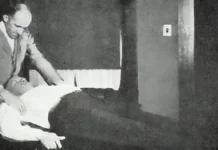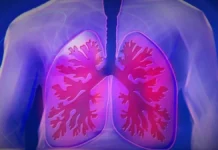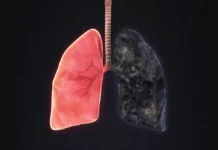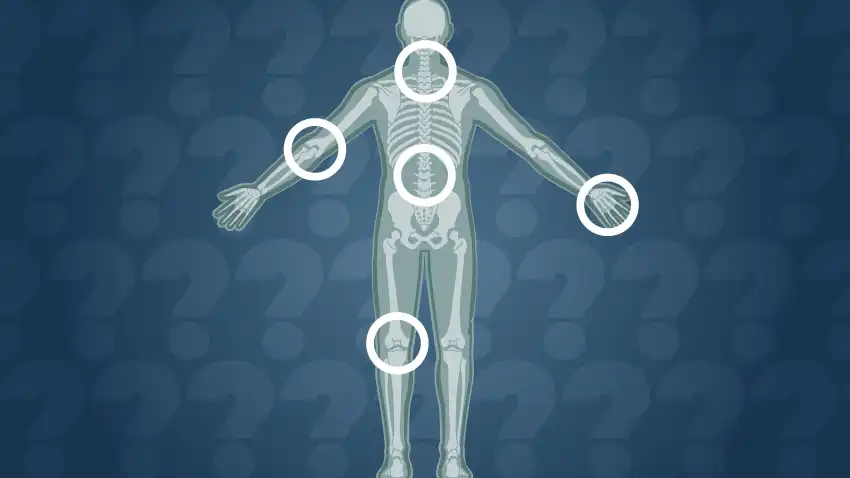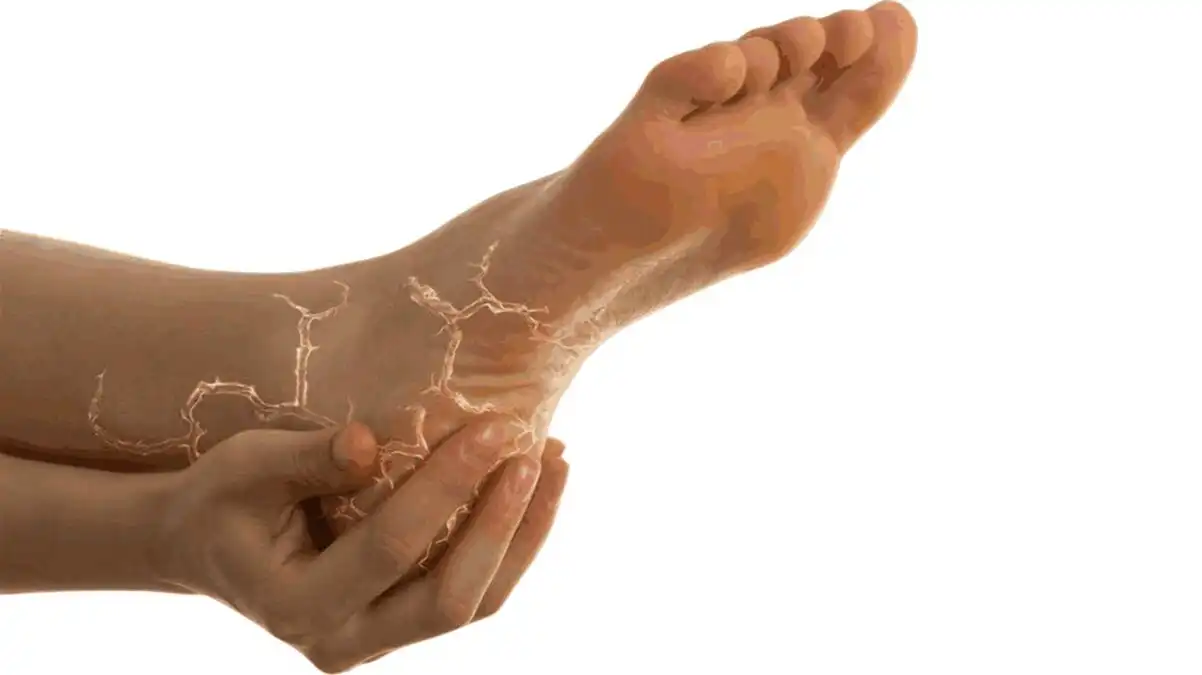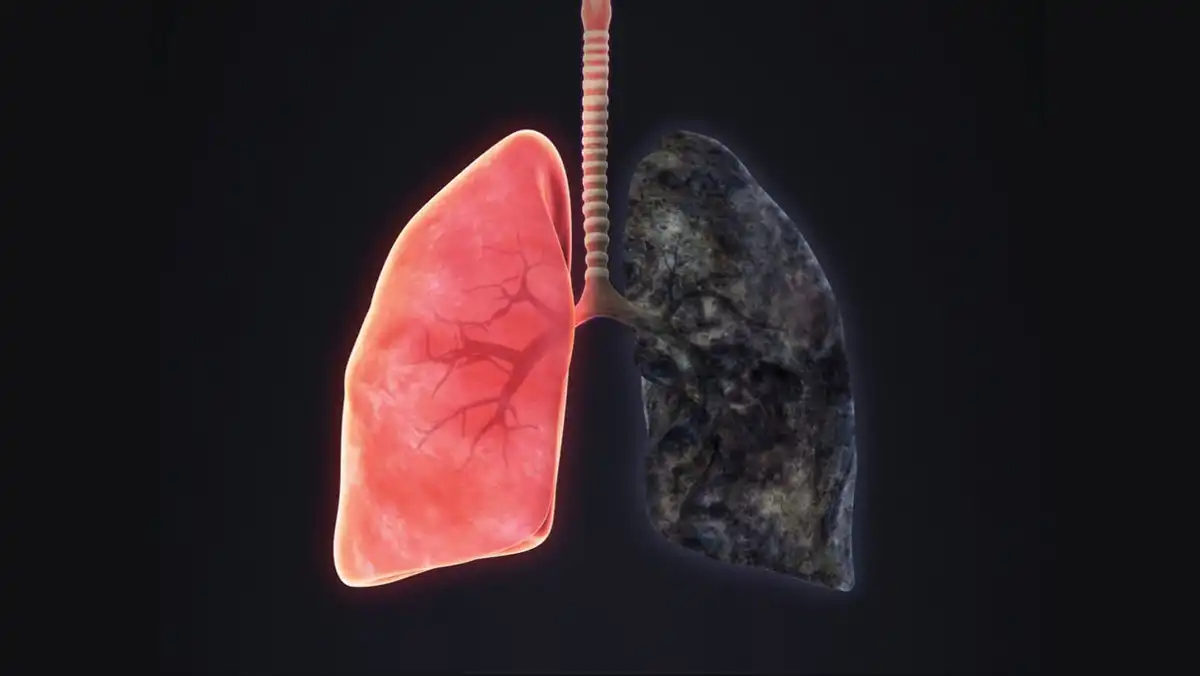Introduction
Osteopathy, as a holistic medical approach, explores various techniques to treat physical conditions by considering the body as a whole. At the heart of these approaches is the “thoracic pump,” an osteopathic technique that focuses on the thoracic region and ribs to improve mobility and respiratory function.
The thoracic pump, a central concept in osteopathy, is of paramount importance in the treatment of physical conditions and offers profound benefits for overall health. This osteopathic approach, developed as an extension of the fundamental principles set forth by Andrew Taylor Still, emphasizes the importance of primary respiratory movement in maintaining the structural and functional balance of the human body.
At the heart of the thoracic pump is the respiratory mechanism, a subtle but crucial dynamic that influences every system in the body. Osteopaths consider breathing to be not simply a physiological function, but a fundamental act related to vitality and energy regulation. The primary respiratory movement, defined by a rhythmic expansion and contraction of the skull, sacrum, and craniosacral system, forms the basis of this unique approach.
In the osteopathic context, treatment of chest pump involves a careful assessment of the patient’s respiratory movements. Practitioners look for restrictions and imbalances in the mobility of the cranial, facial, and thoracic structures, then apply gentle manual techniques to restore fluidity to these movements. This approach aims to optimize respiratory function and restore balance throughout the musculoskeletal system.
The benefits of thoracic pump management extend beyond simply improving breathing. By positively influencing the autonomic nervous system, thoracic pump helps regulate stress and promote a state of deep relaxation. In addition, it intervenes in the circulation of cerebrospinal fluid, thus playing a crucial role in neurological health and nutrition of the tissues of the central nervous system.
The physical conditions that can benefit from chest pump treatment are varied, ranging from respiratory disorders such as asthma to musculoskeletal problems such as chronic back pain. In addition, this osteopathic approach can be integrated into the management of neurological disorders and emotional imbalances, emphasizing the holistic view of health that characterizes osteopathy.
In conclusion, the osteopathic chest pump represents a rich and holistic approach to treating physical conditions. By restoring harmony in the primary respiratory movement, osteopaths help to rebalance the body as a whole, opening the way to profound benefits for physical, emotional and neurological health. The in-depth understanding of this respiratory dynamic offers a unique perspective on the complexity of the human body and reinforces the crucial role of osteopathy in promoting optimal health.
In this article, we will deepen our understanding of the chest pump, its application in treating various physical conditions, while exploring the contributions of Dr. C. Earl Miller, DO, to this method.
Miller’s Anatomy and Physiology of the Thoracic Pump
Miller’s thoracic pump is a key concept in osteopathy, often studied for its ability to influence lymphatic and venous circulation as well as pulmonary ventilation. Here is an overview of its anatomy, physiological function and mechanisms of action.
Anatomical Structure
Miller’s thoracic pump consists mainly of the following structures:
- Thorax : Consists of the rib cage, which includes the ribs, sternum, intercostal muscles, and diaphragm.
- Diaphragm : The main muscle of respiration, separating the thoracic cavity from the abdominal cavity.
- Accessory respiratory muscles : Include the scalene, sternocleidomastoid, and abdominal muscles, which assist in breathing.
- Pleura : A double membrane surrounding the lungs, allowing their expansion and contraction.
- Thoracic vascular and lymphatic system : Includes the veins and lymphatic vessels, including the superior vena cava and thoracic duct, which carry deoxygenated blood and lymph, respectively, back to the heart.
Physiological Function
The thoracic pump has several essential physiological functions:
- Pulmonary Ventilation : Facilitates the inspiration and expiration of air in the lungs, thanks to the action of the diaphragm and the intercostal muscles.
- Lymphatic Circulation : Helps return lymph to the bloodstream via the thoracic duct, using intrathoracic pressure variation.
- Venous Return : Facilitates the return of venous blood to the heart by lowering intrathoracic pressure during inspiration, which draws blood from the peripheral veins to the large thoracic veins.
Mechanisms of Action
The mechanisms of action of the Miller thoracic pump are based mainly on changes in intrathoracic pressure during respiratory movements:
- Inspiration :
- The diaphragm contracts and descends, increasing thoracic volume and lowering intrathoracic pressure.
- This reduction in intrathoracic pressure allows air to be drawn into the lungs, and promotes the return of venous blood and lymph to the heart.
- Expiration :
- The diaphragm relaxes and rises, reducing thoracic volume and increasing intrathoracic pressure.
- This increase in pressure helps push air out of the lungs and pushes lymph and venous blood toward the large veins and heart.
- Accessory respiratory muscles :
- During forced breathing or physical exertion, accessory muscles increase the capacity of the thoracic pump by helping to expand or compress the rib cage more effectively.
Clinical Applications of Thoracic Pump
The clinical applications of the Miller Thoracic Pump are varied and are aimed at improving respiratory, circulatory and lymphatic health. Here is an overview of the physical conditions treated, specific ailments, circulatory and lymphatic disorders involved, as well as relevant case studies and clinical findings.
Physical Conditions Treated
The Miller Chest Pump can be used to treat a variety of physical conditions, including:
- Respiratory conditions : asthma, chronic bronchitis, emphysema, pneumonia.
- Circulatory disorders : venous insufficiency, peripheral edema, venous congestion.
- Lymphatic dysfunctions : lymphedema, lymphatic congestion.
List of physical conditions treated:
Respiratory Diseases
Asthma
- Application : The technique helps to improve pulmonary ventilation and reduce airway resistance.
- Clinical results : Improvement in respiratory capacity, reduction in asthma attacks and decreased use of bronchodilators were observed in some patients.
Bronchitis
- Application : The chest pump promotes the expectoration of secretions and improves ventilation.
- Clinical results : Patients report reduced cough and improved breathing.
Circulatory Disorders
Venous insufficiency
- Application : By increasing intrathoracic pressure during exhalation, the thoracic pump helps to propel blood towards the heart.
- Clinical results : Reduction of edema and improvement of venous circulation were reported.
Edema
- Application : The technique promotes venous and lymphatic drainage, helping to reduce fluid accumulation.
- Clinical results : Patients show decreased edema and improved mobility and comfort.
Lymphatic Dysfunctions
Lymphedema
- Application : By using variations in thoracic pressure, the thoracic pump facilitates the return of lymph into the bloodstream.
- Clinical findings : Reduction in lymphedema volume and improvement in lymphatic function are often observed.
Other Physical Conditions Treated
Cardiovascular Diseases
- Congestive Heart Failure : The chest pump helps improve venous return, which can ease the workload on the heart and reduce symptoms of heart failure.
- Clinical outcomes : Patients may experience decreased dyspnea and improved exercise tolerance.
Musculoskeletal pain
- Non-Cardiac Chest Pain : By releasing muscle tension and improving chest mobility, chest pumping can help reduce musculoskeletal chest pain.
- Clinical results : Reduction of pain and improvement of thoracic mobility.
- Floating Rib Syndrome : This technique can stabilize and reduce pain associated with floating ribs.
- Clinical results : Patients report reduced pain and improved thoracic stability.
Digestive disorders
- Gastroesophageal Reflux Disease (GERD) : Thoracic manipulation can help reduce intra-abdominal pressure and improve venous return, which may have a positive impact on GERD symptoms.
- Clinical results : Reduction of reflux symptoms and improvement of digestion.
- Constipation : By promoting diaphragmatic movement and intestinal motility, the chest pump may be beneficial for patients suffering from constipation.
- Clinical results : Improvement of intestinal transit and reduction of constipation.
Case Studies and Clinical Results
List:
- Congestive Heart Failure :
- Background : A study of patients with congestive heart failure incorporated chest pump techniques into their rehabilitation program.
- Results : Improved heart function, reduced congestion symptoms and improved quality of life.
- Non-Cardiac Chest Pain :
- Background : Patients with noncardiac chest pain were treated with the chest pump.
- Results : Significant reduction in pain and improvement in chest function.
- Gastroesophageal reflux disease (GERD) :
- Background : Patients with GERD received chest pump treatments in addition to conventional therapies.
- Results : Reduction in reflux episodes and improvement in digestive symptoms.
- Constipation :
- Background : A study of patients with chronic constipation incorporated chest pump techniques into their treatment.
- Results : Improved intestinal transit and reduced constipation.
- Asthma study
- Background : A clinical study in asthmatic patients used chest pump techniques as an adjunct to standard medical treatment.
- Results : Patients showed significant improvement in lung function, reduction in symptoms, and decreased use of rescue medications.
- Asthma study :
- Background : A clinical study in asthmatic patients used chest pump techniques as an adjunct to standard medical treatment.
- Results : Patients showed significant improvement in lung function, reduction in symptoms, and decreased use of rescue medications.
- Treatment of chronic bronchitis :
- Background : A group of patients with chronic bronchitis received regular sessions of chest pump therapy.
- Results : Improved expectoration capacity, reduced cough and improved quality of life.
- Venous insufficiency :
- Background : Patients with chronic venous insufficiency were treated with the thoracic pump technique.
- Results : Significant reduction in edema and improvement in the feeling of heavy legs.
- Lymphedema :
- Background : A study of patients with lymphedema secondary to breast cancer treatment incorporated the chest pump into their rehabilitation protocol.
- Results : Decrease in lymphedema volume and improvement in mobility of the affected arm.
- Congestive Heart Failure :
- Background : A study of patients with congestive heart failure incorporated chest pump techniques into their rehabilitation program.
- Results : Improved heart function, reduced congestion symptoms and improved quality of life.
- Non-Cardiac Chest Pain :
- Background : Patients with noncardiac chest pain were treated with the chest pump.
- Results : Significant reduction in pain and improvement in chest function.
- Gastroesophageal reflux disease (GERD) :
- Background : Patients with GERD received chest pump treatments in addition to conventional therapies.
- Results : Reduction in reflux episodes and improvement in digestive symptoms.
- Constipation :
- Background : A study of patients with chronic constipation incorporated chest pump techniques into their treatment.
- Results : Improved intestinal transit and reduced constipation.
Osteopathic Procedures and Techniques
Miller’s Thoracic Pump Osteopathic procedures and techniques are specifically designed to optimize respiratory, circulatory, and lymphatic function. Here is an overview of the mobilization, release, and stimulation techniques applied within this framework.
List:
Mobilization Techniques
Thoracic Mobilization
- Description : Use of rhythmic and controlled movements to mobilize the rib cage and surrounding structures.
- Objective : To improve the mobility of the ribs and spine, thus facilitating better pulmonary ventilation.
- Procedure :
- The patient is in the supine position.
- The osteopath places his hands on each side of the rib cage.
- Rhythmic compression and decompression movements are applied to mobilize the ribs.
Diaphragm Mobilization
- Description : Techniques to improve the mobility and function of the diaphragm, the main respiratory muscle.
- Purpose : To facilitate deeper and more efficient breathing, improve circulation and lymphatic function.
- Procedure :
- The patient is in a lying position.
- The osteopath places his hands under the lower ribs.
- Gentle, rhythmic movements are used to mobilize the diaphragm during inhalation and exhalation.
Liberation Techniques
Thoracic Myofascial Release
- Description : Techniques applied to the fascia and muscles of the rib cage to reduce tension and improve mobility.
- Purpose : To release myofascial restrictions that can impede breathing and circulation.
- Procedure :
- The patient is in a lying position.
- The osteopath uses sustained pressure and gentle stretching on the thoracic muscles and fascia.
- The movements are adjusted according to the tissue response to promote relaxation.
Release of the Diaphragmatic Tension Point
- Description : Techniques aimed at releasing localized tension in the diaphragm.
- Objective : Improve respiratory function by releasing tension points.
- Procedure :
- The patient is in a lying position.
- The osteopath palpates the diaphragm to identify points of tension.
- Gentle pressure is applied to the identified points until the tension is released.
Stimulation Techniques
Rhythmic Chest Pumping
- Description : Pumping technique applied to the rib cage to stimulate lymphatic and circulatory flow.
- Objective : Improve lymphatic and venous drainage, reduce edema and promote circulation.
- Procedure :
- The patient is in the supine position.
- The osteopath places his hands on each side of the thorax.
- Rhythmic compression and release movements are applied in synchronization with the patient’s breathing.
Stimulation of Venous Return
- Description : Techniques aimed at promoting venous return to the heart using variations in intrathoracic pressure.
- Objective : Improve venous circulation, particularly useful in cases of venous insufficiency or edema.
- Procedure :
- The patient is in a lying position with the legs raised.
- The osteopath applies gentle, rhythmic pressure to the lower extremities in sync with breathing.
- Pressure is released during inspiration and reapplied during expiration to maximize venous return.
Lymphatic stimulation
- Description : Techniques aimed at stimulating lymphatic drainage through rhythmic movements and gentle pressure.
- Objective : Reduce lymphatic congestion and promote tissue detoxification.
- Procedure :
- The patient is in the supine position.
- The osteopath applies gentle, rhythmic pumping movements to areas of lymphatic congestion.
- Movements are performed towards the major lymph nodes to encourage drainage.
Other Osteopathic Techniques of Miller’s Thoracic Pump
In addition to the mobilization, release, and stimulation techniques already mentioned, there are other osteopathic approaches specific to Miller’s thoracic pump. These techniques are designed to maximize therapeutic benefits and can be tailored to individual patient needs.
Liste:
Mobilization of Individual Coasts
- Description : Targeted techniques on each rib to improve their individual mobility.
- Objective : To restore normal rib movement, which is essential for optimal breathing and efficient circulatory function.
- Procedure :
- The patient is in the supine or lateral decubitus position.
- The osteopath grasps each rib and applies gentle sliding and rotating movements to mobilize the costovertebral joint.
Mobilization of the Sternum
- Description : Techniques aimed at mobilizing the sternum to improve mobility of the anterior rib cage.
- Objective : To facilitate better anterior thoracic expansion and improve respiratory function.
- Procedure :
- The patient is in the supine position.
- The osteopath places his hands on the sternum and applies gentle mobilization movements following the patient’s breathing rhythm.
Liberation Techniques
Release of the Intercostal Muscles
- Description : Techniques applied to the intercostal muscles to reduce tension and improve mobility between the ribs.
- Objective : To improve the elasticity of the rib cage and facilitate deeper, freer breathing.
- Procedure :
- The patient is in the supine or sitting position.
- The osteopath uses gentle pressure and stretching on the intercostal muscles to release tension.
Pelvic Floor Release Technique
- Description : Techniques aimed at releasing tension in the pelvic floor, which can indirectly improve respiratory and circulatory function.
- Objective : Improve diaphragmatic function and venous return through the release of pelvic tension.
- Procedure :
- The patient is in the supine position with the knees flexed.
- The osteopath applies gentle pressure and stretches to the pelvic floor muscles.
Stimulation Techniques
Stimulation of Autonomic Reflexes
- Description : Techniques aimed at stimulating autonomic reflexes to improve the function of the thoracic organs.
- Objective : To optimize the autonomous regulation of the heart and lungs.
- Procedure :
- The patient is in the supine position.
- The osteopath applies gentle, rhythmic pressure to specific points known to influence thoracic autonomic reflexes.
Resonance and Vibration Techniques
- Description : Use of gentle vibrations and resonances applied to the rib cage to stimulate internal tissues and fluids.
- Objective : To improve lymphatic and blood circulation, as well as respiratory function.
- Procedure :
- The patient is in the supine position.
- The osteopath applies gentle vibrations to the rib cage in synchronization with the patient’s breathing.
Combined Techniques
Combined Pumping Technique with Thoracic Mobilization
- Description : Combination of pumping and mobilization techniques to maximize therapeutic effects.
- Objective : To simultaneously improve thoracic mobility, circulation and lymphatic function.
- Procedure :
- The patient is in the supine position.
- The osteopath uses one hand to apply pumping techniques while the other hand mobilizes the rib cage or specific ribs.
Myofascial Release Technique with Lymphatic Stimulation
- Description : Combination of myofascial release techniques and lymphatic stimulation to treat tension and improve lymphatic drainage.
- Objective : Reduce myofascial tension and promote effective lymphatic drainage.
- Procedure :
- The patient is in the supine position.
- The osteopath applies myofascial release techniques followed by lymphatic stimulation movements on the same areas.
Profound Benefits of Thoracic Pump
The Miller Chest Pump offers several profound benefits that positively influence the autonomic nervous system, blood and lymphatic circulation, as well as the general well-being and quality of life of individuals:
Effects on the Autonomic Nervous System
Miller’s chest pump, through its specific mobilization and stimulation techniques, can favorably influence the autonomic nervous system:
- Balancing Sympathetic and Parasympathetic Tone : Rhythmic pumping and mobilization techniques can help reduce excessive activation of the sympathetic nervous system, promoting a relaxing and restorative parasympathetic response.
- Stress and Anxiety Reduction : By promoting deep, regular breathing, chest pump helps reduce cortisol (stress hormone) levels and induce a state of relaxation that benefits the entire body and mind.
Improved Blood and Lymphatic Circulation
The techniques used in Miller’s chest pump are effective in optimizing blood and lymph circulation:
- Stimulation of venous return : Rhythmic movements and pumping techniques applied to the rib cage help facilitate venous return to the heart, thus reducing edema and improving circulation in the lower limbs and other areas of the body.
- Increased Lymphatic Drainage : Lymphatic stimulation techniques promote the movement of stagnant lymphatic fluids, helping to reduce swelling, boost immunity, and eliminate toxins from the body more efficiently.
Impact on General Well-being and Quality of Life
By improving respiratory and circulatory function and positively influencing the autonomic nervous system, the Miller Chest Pump can significantly improve overall well-being and quality of life:
- Improved breathing capacity : Improved breathing through better thoracic and diaphragmatic mobility leads to more efficient oxygenation of tissues, thus promoting better energy and vitality.
- Reduction in physical symptoms : Patients may experience a reduction in chest pain, muscle tension, and symptoms associated with conditions such as asthma, circulatory disorders, and lymphatic dysfunction.
- Improved Emotional and Mental State : By reducing stress and promoting relaxation, chest pump helps improve mood, reduce anxiety, and promote an overall better emotional state.
Testimonials and Feedback
Patient testimonials and feedback from osteopathic practitioners regarding the Miller thoracic pump highlight the positive effects and benefits of this therapeutic approach.
Patient Testimonials
- Improved Breathing :
- “Before the chest pump sessions, I often suffered from breathing difficulties. After just a few sessions, my breathing has improved significantly. I feel lighter and more able to take deep breaths.”
- Reduction of Chest Pain :
- “Chest pump sessions have helped relieve my chronic chest pain. I feel less tension and stiffness in my chest, which has greatly improved my quality of life.”
- Impact on Stress and Anxiety :
- “I am surprised at the calming effect the sessions have had on my mental state. I feel much less stressed and anxious since I started treatment.”
- Reduction of Edema :
- “After undergoing regular sessions, my edema problems have significantly decreased. My legs are less swollen and I feel more comfortable in my movements.”
- General Improvement in Well-being :
- “The chest pump has really improved my overall well-being. I feel more energetic, more relaxed and better about myself. It has had a positive impact on all aspects of my daily life.”
Feedback from Osteopathic Practitioners
- Clinical Efficacy :
- “I have observed significant improvement in many patients suffering from respiratory and circulatory disorders after incorporating the chest pump into my treatments. The results are often rapid and long-lasting.”
- Positive Patient Response :
- “My patients often report feelings of immediate relief after a session. They also express increased satisfaction with their breathing ability and overall comfort level.”
- Integration into Treatment Plans :
- “The chest pump has become an essential part of my therapeutic approach for various conditions. It effectively complements other osteopathic and medical techniques, thus providing more comprehensive results.”
- Improving Quality of Life :
- “I frequently see significant improvement in my patients’ quality of life after regular treatment with the chest pump. This includes better pain management, improved mobility and reduced stress.”
- Adaptability and Customization :
- “One of the strengths of the chest pump is its ability to be tailored to the specific needs of each patient. This allows me to adjust techniques based on individual responses, maximizing the benefits for each person.”
Contraindications of the Miller Thoracic Pump
Contraindications for the use of the Miller Thoracic Pump, as with any osteopathic technique, may vary depending on the patient’s specific medical condition and clinical situation.
Here are some general contraindications to consider:
- Recent Fractures or Trauma : In the presence of recent fractures of the ribs or thoracic spine, the use of mobilization techniques may aggravate existing injuries and delay healing.
- Acute Infections : Severe respiratory infections or acute lung conditions may require a period of rest and medical treatment before any osteopathic intervention.
- Severe Osteoporosis : Significantly reduced bone density can make the ribs and thoracic vertebrae more susceptible to fracture during osteopathic manipulation.
- Unstable Cardiac Conditions : Patients with severe heart failure, uncontrolled arrhythmias or other unstable cardiac conditions should be carefully evaluated before considering any form of osteopathic therapy that may increase cardiac load.
- Acute Respiratory Disorders : In cases of acute respiratory distress or severe exacerbation of chronic respiratory diseases, the application of techniques that affect respiratory function should be carefully evaluated and adjusted accordingly.
- Metastatic Cancers in the Thoracic Region : Osteopathy may be contraindicated in cases of advanced metastatic cancers that compromise bone stability or respiratory function.
- Advanced pregnancy : Due to significant anatomical and physiological changes, intensive thoracic manipulation may be contraindicated to avoid any risk to the mother and fetus.
- Inability to cooperate : In the event that the patient is unable to cooperate or follow instructions during the session, it may be best to postpone or modify the therapeutic approach.
- Severe skin conditions : Certain severe dermatological conditions in the thoracic region may require temporary avoidance of osteopathic manipulations to avoid irritation or exacerbation.
- Blood clotting problems : Patients with blood clotting disorders, such as hemophilia or those taking blood thinners, may be at increased risk of bleeding or hematoma following osteopathic manipulation.
- Severe bone diseases : Conditions such as osteogenesis imperfecta (brittle bone disease) or other weakening bone diseases may make osteopathic manipulation inappropriate due to the increased risk of fractures.
- Severe hiatal hernias : Severe hiatal hernias may be exacerbated by thoracic manipulation, increasing the risk of gastrointestinal complications.
- Recent surgical implants : Patients with recent surgical implants in the thoracic region may require a more gentle approach to avoid disruption of healing or post-operative complications.
- Blood clotting disorders or taking anticoagulants : Patients with blood clotting disorders or taking anticoagulant medications may be at increased risk of bleeding or bruising following osteopathic manipulations.
- Active infections or fever : Active infections, especially if affecting the chest area or respiratory tract, may require temporary avoidance of manipulation to prevent spread of infection or complications.
- Unstable neurological conditions : Conditions such as recent stroke, spinal cord injury, or other unstable neurological disorders may require a more cautious approach due to the risk of neurological complications.
Conclusion
In summary, the Miller Chest Pump offers an effective and holistic osteopathic approach, providing a multitude of significant clinical benefits. By promoting better respiratory function, improving blood and lymphatic circulation, and reducing stress, this technique contributes to a significant improvement in the overall well-being of patients. Clinical applications cover a wide range of conditions, including respiratory, circulatory and lymphatic disorders, as well as stress and chest pain management.
Looking ahead, further research is needed to deepen our understanding of the underlying mechanisms and to further explore the potential applications of this therapeutic approach. Integration with other therapeutic modalities and the development of advanced training programs are also essential to maximize clinical benefits for patients. In conclusion, the Miller chest pump represents continued promise in the field of osteopathy, offering optimistic prospects for improving long-term health and well-being.
References
- Miller CE. The Miller Chest Pump. The Academy of Applied Osteopathy.
- Degenhardt BF, Kuchera ML. Osteopathic Principles in Practice. Lippincott Williams & Wilkins, 2005.
- American Academy of Osteopathy. Osteopathic Manipulative Treatment (OMT). Available at: https://www.academyofosteopathy.org/what-is-osteopathic-medicine/osteopathic-manipulative-treatment-omt .
- Chaitow L. Modern Neuromuscular Techniques. Churchill Livingstone, 2005.
Recommended Further Reading
- Chila A, ed. Foundations of Osteopathic Medicine. Lippincott Williams & Wilkins, 2010.
- Greenman PE. Principles of Manual Medicine. Lippincott Williams & Wilkins, 2003.
- Still AT. Philosophy of Osteopathy. 1899. Reprinted by Eastland Press, 1992.
- Ward RC, ed. Foundations for Osteopathic Medicine. Lippincott Williams & Wilkins, 2002.





